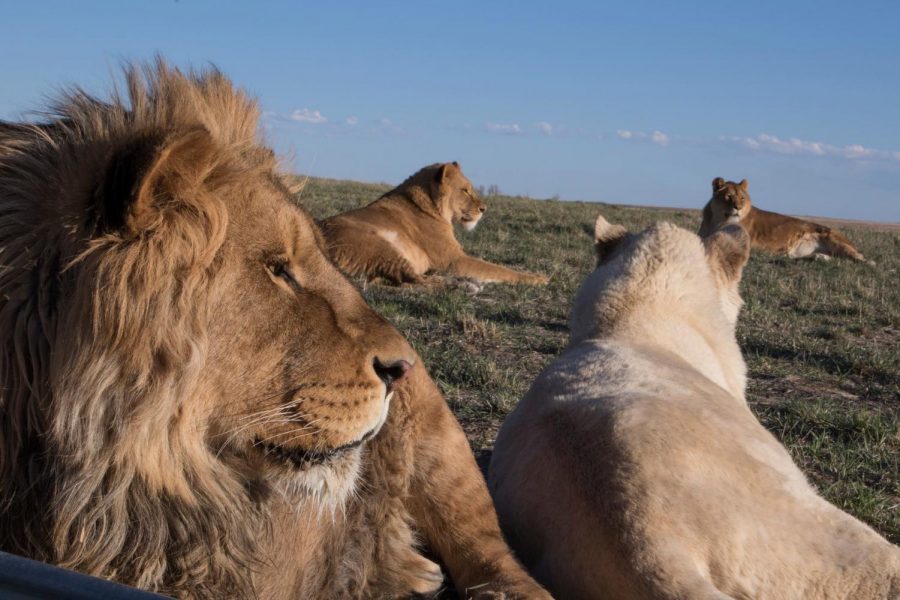The value of sanctuaries, rehabilitation centers for wildlife
September 28, 2021
You can find wildlife sanctuaries and rehabilitation centers all around the world. From gorilla sanctuaries in Africa to bird sanctuaries in Florida, many non-profit organizations are working to help and protect a variety of wildlife. These centers are important to the conservation of a multiplicity of species.
A sanctuary is a place where injured, abused, and/or abandoned wildlife live out the rest of their lives in peace. There are some sanctuaries that keep animals until a spot opens in a zoo, where caretakers can tend to them for the remainder of their time. Animals that live in sanctuaries are not used in commercial activities such as entertainment, sport, sale or trade.
Genuine sanctuaries also do not breed their animals. The main goal is to respect individual animals and give them a place of refuge. Sanctuaries dedicate their time to the safety and health of rescued wildlife; enclosures are designed with the specific animal in mind that will live there.
There are also wildlife sanctuaries that are born from a government mandate. These sanctuaries are also called wildlife refuges in some areas. These sanctuaries are usually patrolled by park rangers or other employees to ensure that no one (or thing) hunts or harasses the animals. These areas are mapped out and protected based on where wild animals already roam or live.
While wildlife sanctuaries do share several qualities with rehabilitation centers, there are a few differences. Rehabilitation centers usually focus on the end goal of releasing the wildlife back into the wild. These centers care for injured or orphaned wildlife and are required to comply with local, state, and federal laws.
The Michigan State University College of Law said that many states “regulate the rehabilitation of wildlife by requiring individuals who conduct rehabilitation activities to be licensed with their state Department of Natural Resources or Fish and Wildlife Department.”
Rehabilitation centers include examinations, treatments, diets and physical therapy. As said before, most rehabilitation centers focus on the conditioning that injured, diseased or orphaned animals need before their release. Usually, their staff includes a veterinarian in case an animal needs medical treatment.
While centers such as these exist, they do not guarantee an animal’s return to the wild, especially when those animals are born into captivity. Many times, human care can affect how an animal should react to humans in the wild. If they get used to interacting with humans, they lose their natural fear of them; this can keep them from having a weariness of poachers or people who wish to do them harm in the wild.
Being in captivity can also keep wildlife from learning critical survival skills such as hunting. Most animals are taught by their parents to survive and thrive in the wilderness, so when an animal spends too much time in captivity, they lose that natural instinct.
Captivity also breeds reliance on humans. This ties into the natural instinct to hunt – if animals are learning to rely on humans for food, water and shelter, they will not do what is necessary to survive. A good yet tragic example of this is Keiko, a male orca captured off the coast of Iceland. The general population knows him as the killer whale who starred in the movie “Free Willy” in 1993.
After the movie debuted, activists and fans worked to have Keiko freed and released back into the wild. Unfortunately, release is not always the best solution for animals in captivity. After several failed attempts to re-introduce Keiko into wild orca pods, he swam into a harbor – actively seeking human companionship. Nothing came of this, sadly. Since he was ill-equipped to survive in the wild, he failed to hunt and died from pneumonia only three years after his release.
This account shows the need for an understanding of an animals’ needs, which is why sanctuaries and rehabilitation centers are an absolute necessity. Without knowledge of the situation, more bad can come from an already unhappy situation. Sanctuaries and rehabilitation centers offer a service that is highly valuable to environmentalists and activists alike.
Wildlife sanctuaries and rehabilitation centers do a lot of good for the planet. Sanctuaries protect animals in their natural habitat, which means no stressful relocation plans. Most of these places are established for endangered species to help them grow in numbers and, hopefully, bounce back from their endangered classification.
Many sanctuaries and rehabilitation centers allow biologists and researchers inside their operations. This can aid in education and further steps to protect these animals in the wild without the need for sanctuaries or centers.
Wildlife centers are certainly up to the task of taking detailed care of a variety of species. While a lot of people who work at these kinds of places are volunteers, almost all centers have veterinarians, ecologists, biologists and even dentists. These people work hard to make the transition from wild to captive smooth and safe. Pretty much anyone can work for a sanctuary as long as they truly want to put in the time and effort to learn about the kind of animal they are taking care of.
Wildlife sanctuaries and rehabilitation centers are mostly non-profit organizations. This means that their main goal is not financially driven. Grants, fundraising and donations are what give these centers the ability to continue operating. The help of volunteers is also a huge part of the operation.
If you want to involve yourself in the safety and rehabilitation of wildlife, there are a lot of open doors. The main way to get involved is to volunteer. Volunteers do everything from cleaning enclosures to actively caring for the animals. While it is not a paid position, it is a great experience and plays a huge part in a sanctuary or rehab center’s ability to stay afloat.
Another way that you can help your local sanctuaries, rehabilitation centers and even zoos is through donations. From medication to basic needs, finances are always a top player in how well an animal is being cared for. Many organizations rely on donations from their local community to be able to buy the necessary supplies for their animals. These donations help organizations continue their work in protecting, medicating and releasing wildlife.


